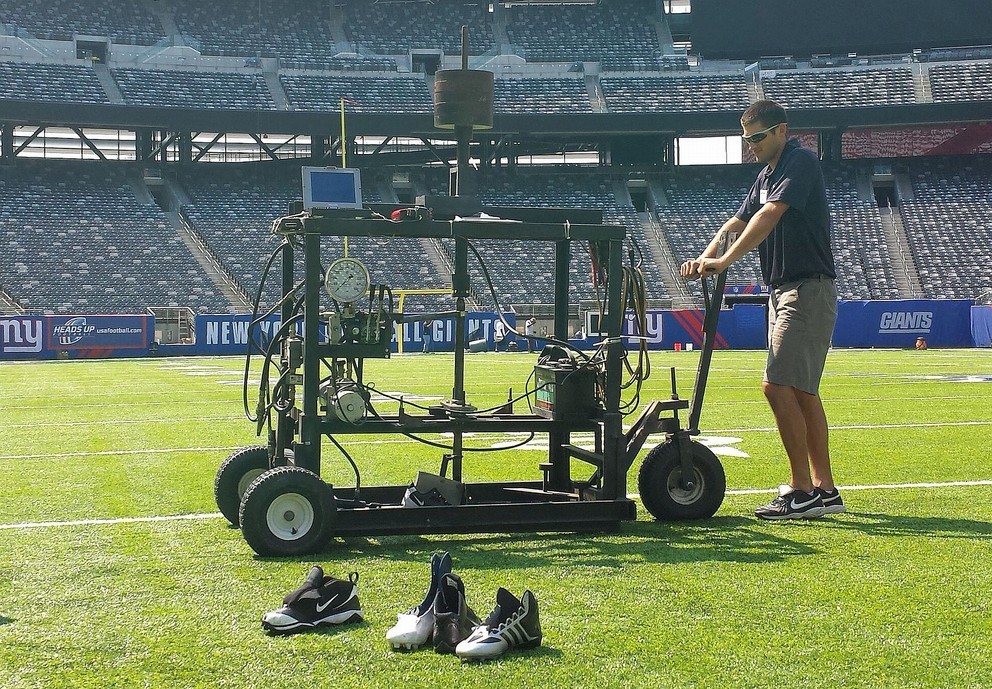Study Leads to Traction Database of Various Sports Shoes and Field Types
September 19, 2013 in Research
 UNIVERSITY PARK, Pa. — Athletes looking to maximize performance on the playing field sometimes seek footwear that provides the best traction. But it’s important to balance the need for good traction with the risk of injury, according to turfgrass researchers in Penn State’s College of Agricultural Sciences.
UNIVERSITY PARK, Pa. — Athletes looking to maximize performance on the playing field sometimes seek footwear that provides the best traction. But it’s important to balance the need for good traction with the risk of injury, according to turfgrass researchers in Penn State’s College of Agricultural Sciences.
The college’s Center for Sports Surface Research has released the results of an extensive traction study that tested 30 types of athletic shoes on two natural turf surfaces — Kentucky bluegrass and bermudagrass — and one synthetic turf surface, FieldTurf Revolution. These are three of the most common athletic-field playing surfaces.
A first-of-its-kind, online database generated from the research provides test results for many popular shoe models currently on the market from manufacturers such as Nike, Adidas and Under Armour. This information can be important to consider when selecting athletic footwear, according to Thomas Serensits, manager of the Center for Sports Surface Research.
“Although a certain level of traction is necessary for optimum athletic performance, previous research has shown that shoe selection can be a factor in lower-extremity injury risk,” Serensits explained.
“As an athlete accelerates, stops and changes direction, numerous forces are transmitted to the lower extremities,” he said. “In particular, higher rotational forces may result in increased injuries to the knee and ankle due to the foot becoming ‘entrapped’ in the playing surface during pivoting movements.”
Because traction data have not been directly correlated with injury risk, researchers have not established “safe” and “unsafe” traction thresholds. But the database provides consumers with scientific data, allowing shoe comparisons specific to the type of playing surface, Serensits noted.
The easy-to-navigate traction database contains traction values, color-coded tables for easy comparisons between shoes, and images of each shoe included in the study.